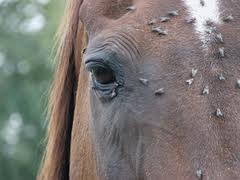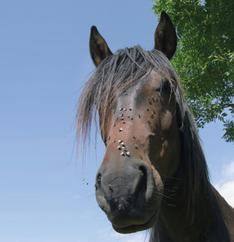Walnut Cove, North Carolina Call us: (336) 593-5422
Latitude 36 Mobile Veterinary Services
E-mail: lat36vet@aol.com
(copy & paste this address into your mail program)
News & Articles
Flies on Your Horse - June 10, 2013
In the warm, muggy weather of the late spring and summer we often see a bothersome problem of flies on our horses. There are several types of these pests that can be commonly recognized.
Bots: The scientific name of this fly is Gasterophilus. The adult can deposit up to 1,000 eggs attached to the hairs on the horse’s legs, belly, flanks, shoulders or mane. The horse licks the eggs off the hair and the eggs hatch in the horse’s mouth and then go to the stomach where they live until spring or early summer. Control is aimed at the larvae in the stomach during the winter.
Horse and Deer Flies: These are the tabinidae or “Tabanids” and can cause painful bites. Usually Horse Flies only bite animals that are standing still while Deer Flies typically bite moving animals.
Face Flies: The scientific name of these flies is Musca autumnalis. They are very strong fliers and can travel several miles. Only the females will gather around the animal’s eyes, mouth, and muzzle, and they also will group at wounds to feed on blood and other exudates. The males feed only on nectar and dung. Many fly sprays will discourage them from gathering on your horses.
Stable Flies: The scientific name is Stomoxys calcitrans and they differ from the House Fly in that these have piercing mouthparts. Both males and females are blood feeders and usually attack below the knee causing the horse to stamp their feet. These flies only remain on the horse for a few minutes at a time. The best control method for these pests is to limit their breeding areas which are manure and warm, moist areas.





